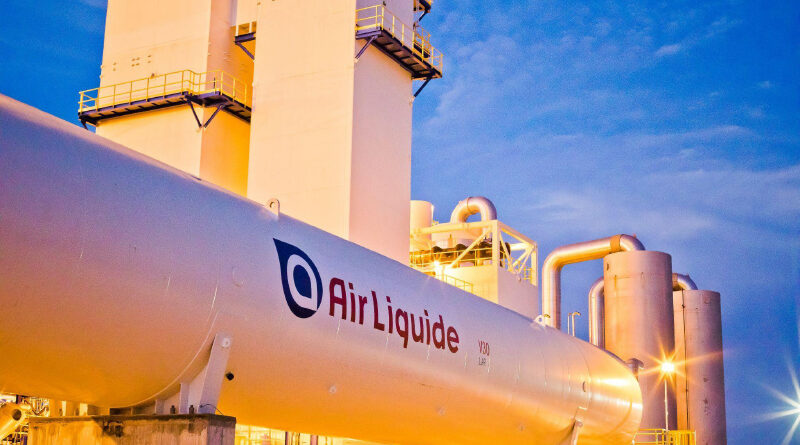
Industrial solutions to decarbonise Europe
Air Liquide’s decarbonisation solutions are key to addressing climate emergency, while contributing to EU’s industrial renewal and sovereignty. Molecules such as hydrogen, oxygen or nitrogen are necessary to the development of a net-zero industry and clean mobility, as well as to support the growth of EU’s semiconductor production. Renewable hydrogen and Carbon capture technologies developed by our Group will contribute to abating industry’s CO2 emissions.
In a context of aroused geopolitical uncertainties and as part of the broader Green Deal Industrial Plan, the European Commission published new initiatives. We welcome them and call for further alignment between existing and upcoming pieces of EU’s decarbonisation and autonomy policy framework.
Provide an optimal regulatory framework for the rapid deployment of renewables and low-carbon technologies
In its recently published Net Zero Industry Act, the Commission proposes to support the development of technologies that are key for reaching the EU’s decarbonization goals. Rightly so, hydrogen, biogas production and Capture Carbon and Storage (CCS) are identified, including targets on carbon storage. However, during the legislative process improvements could be proposed to focus more on the “value chains” notably for both the CCUS and (renewable & low-carbon) Hydrogen. It is key that CO2 infrastructures are now developed in parallel to storage, in order to increase the speed of industrial hubs decarbonization. Also the support to hydrogen mobility would help Member States that effectively need to deploy alternative fuels infrastructures to meet EU targets.
|
PROJECT IN BRIEF: Kairos@C What is it? Air Liquide and BASF are planning to develop the largest cross border CCS value chain in the world and to significantly reduce their CO2 emissions at the industrial cluster in the port of Antwerp at the BASF chemical site, in a consortium named Kairos@C. Kairos@C is connected to Antwerp@C, a consortium that aims to halve CO2 emissions in the Port of Antwerp by 2030. Air Liquide and BASF are founding members of Antwerp@C. The EU-Innovation Fund selected Kairos@C project for funding among 311 large scale projects aiming to decarbonise Europe’s industry and energy sectors. How will this clean technology deliver on the EU’s goals? Kairos@C is a cross-border liquid CO2 value chain that will avoid up to 14 Mt CO2 over the first 10 years of operation. Supported by the EU Innovation Fund, this groundbreaking project opens a new chapter towards developing a more sustainable industry. The unique end-to-end CCS project can and should be replicated. Indeed, the 12 largest European industrial clusters account for around 25% of CO2 emissions in Europe. |
|
PROJECT IN BRIEF: Air Liquide retail joint venture with TotalEnergies What is it?
How will this clean technology deliver on the EU’s goals? The installation of new hydrogen refueling stations, especially for heavy duty vehicles, will not only contribute to reaching the goals set out in the Alternative Fuels Infrastructure Regulation, currently awaiting formal approval by EU legislators after the deal reached at the end of March, but will also contribute to the acceleration of the deployment of zero-emissions trucks and thus to the decarbonization of the sector. |
Provided that renewable and low carbon electricity is available in large enough quantities and at affordable prices in the EU, hydrogen can be a lever to contribute to the reduction of the EU’s energy dependencies in a context of enduring geopolitical tensions. To accelerate the development of the European hydrogen market, investments should be focused in a first stage on electricity interconnections and not on long-distance pipelines, as the initial European demand could be met by domestic production and contribute to reducing the EU’s dependencies. Building a European hydrogen industry is not contradictory with the setting of international standards on the attributes of renewable and low-carbon hydrogen to establish an international market framework and build partnerships. It is however important that this should be done in a coordinated and phased manner over time. In this regard, the recently adopted REDIII will represent one of the main drivers for the development of renewable hydrogen in the EU. However, we think that low-carbon Hydrogen (through both carbon capture or nuclear based electrolysis) should also be promoted for the role they have to play during the transitional phase where renewable hydrogen is not yet available in sufficient quantities.
Moreover, through its proposed reform of the Electricity Market Design, the Commission aims to introduce a set of legislative changes to accelerate a surge in renewables and the phase-out of coal and gas, make consumer bills less dependent on volatile fossil fuel prices, better protect consumers from future price spikes and potential market manipulation, and make the EU’s industry clean and more competitive. It is key that this reform delivers on setting long-term price signals, which is fundamental to drive investments accelerating the roll out of renewables. Also, the reinforced focus on flexibility such as energy storage and demand response reflects the growing need for back-up solutions given the rising share of intermittent renewables in the system.
|
PROJECT IN BRIEF: ELYgator What is it? ELYgator, that will be located in Terneuzen in the Netherlands, is one of Air Liquide’s flagship renewable hydrogen projects thanks to its unprecedented scale – encompassing a capacity of no less than 200 MW electrolyzer – and because it cleverly integrates two different electrolysis technologies (PEM and Alkaline) using renewable (wind) electricity. How will this clean technology deliver on the EU’s goals?
The project will be entirely sourced from renewable power sources and will enable avoidance of 3.3M tons of CO2 over its 10 first years of the plant’s operation. |
In order to ensure long term attractiveness for private investment in Europe, at times where other geographies (e.g. USA’s IRA) create a simple and effective framework, it is important to send the right signals to ensure continued private investment in clean technologies. For example, private hydrogen infrastructure such as crackers or pipelines that transport ultra pure molecules used as feedstock/chemical intrant, should not be regulated through the hydrogen and gas package. The gas directive indeed regulates long distance bulk Natural gas pipelines that mainly will be used for power or heat purposes. Applying similar rules to Hydrogen would not make sense as the infrastructure and market dynamics are very different depending on its application. Today, the industrial feedstock hydrogen market is very competitive, while the Hydrogen to energy market is still nascent: Existing hydrogen pipelines (some 1000km mainly in Belgium, Germany and the Netherlands) diameter is of max 30 cm (average 10-15cm) wide, the medium natural gas pipelines to be repurposed into the future hydrogen backbone (some 50.000km according to the European Hydrogen Backbone study) are average 80 and up to 120 cm!
|
PROJECT IN BRIEF: Industrial scale ammonia (NH3) cracking pilot plant – Antwerp What is it? Air Liquide recently announced the construction of an industrial scale ammonia cracking pilot plant in Antwerp, Belgium. Using innovative technology, this new industrial size plant will make it possible to convert, with an optimized carbon footprint, ammonia into hydrogen. The innovative pilot plant, which combines a novel efficient process with Air Liquide’s proprietary technologies, is planned to be operational in 2024. How will this clean technology deliver on the EU’s goals? When transformed into ammonia, hydrogen can be easily transported over long distances. With this cracking technology, Air Liquide will further contribute to the development of hydrogen as a key enabler of the energy transition. Ammonia can be used as an energy carrier. It can be produced with a low-carbon footprint from hydrogen in geographies with abundant renewable energy sources such as sun, water and wind, or other low-carbon power. |
Mobilizing financing for a low-carbon/ net-zero economy
Certainty and clarity of financial support in terms of amounts and timing, visibility on what support is available and under what conditions. This requires providing clearer and simpler sets of conditions that allow visibility and timely decision-making. In this regard, Air Liquide welcomes the NZIA objective to help put Europe on a fairer level playing field. Europe’s competitive position has been weakened by the energy crisis, where gas prices in the EU have been almost seven-times higher than, for instance, in the United States. The introduction of the US IRA combining climate and industrial policy provides at first glance an attractive and clear support scheme for clean technology typically through tax credits. Regarding hydrogen, for example, the amount of the tax credit is mainly based on the CO2 content of the H2 produced. This allows for an efficient decarbonisation as well as for neutrality regarding the technology used. Also the possibility to cumulate aids is triggering a strong appeal to develop a sound hydrogen industry in the USA.
In Europe, the revisions of the State Aid framework – namely General Block Exemption Regulation (GBER) and Temporary Crisis and Transition Framework (TCTF) – should help the shift to net-zero EU objectives.
However, its potential impact on the EU economy remains to be seen. The different national approaches and disbursement of aid under the GBER may result in a fragmented treatment across the EU. Also, we hope that the necessary means will be provided to match the US IRA support levels and be as much technology agnostic.
The upcoming calls under Innovation Funds and the European Hydrogen Bank mechanism as well as the pending proposals for a one-stop shop materialised by European Sovereignty Fund could help to bridge the gap between the demand and supply, de-risk the offtakers and provide the long-term visibility and clarity that is very much needed for EU industry to kick-start its decarbonation at the relevant scale.




